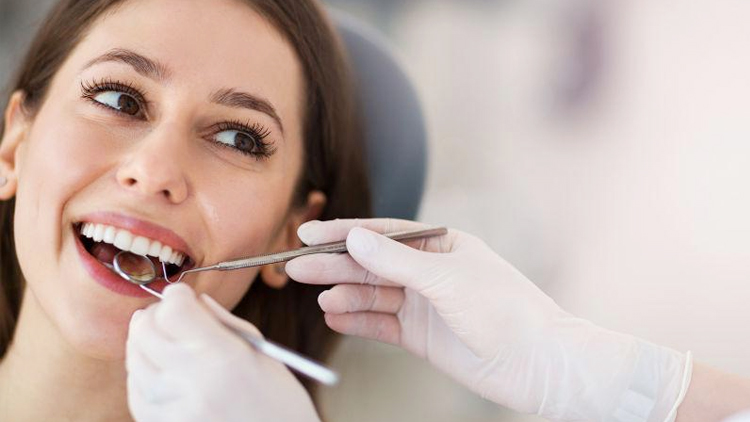
2023-05-29 3642
1. What is the principle of diode lasers for oral soft tissue treatment?
The diode laser with a wavelength of 980nm irradiates biological tissue and can be converted into heat energy absorbed by the tissue, resulting in biological effects such as coagulation, carbonization, and vaporization. Diode lasers use these biological effects to treat oral diseases. For example, by irradiating tissue or bacteria with low-power laser, coagulation and denaturation of tissue protein or bacterial protein can be produced. Coagulation and denaturation of ulcer tissue protein and nerve endings can relieve ulcer pain and accelerate ulcer healing. Laser irradiation in the periodontal pocket can kill bacteria and create a local environment conducive to periodontal healing. When the laser power is increased, the optical fiber after initiation treatment will converge to form a very thin beam on the surface of the tissue, and the high temperature generated can vaporize the tissue to achieve the cutting effect. At the same time, the protein in the blood denatures and coagulates after being heated, which plays the role of hemostasis.
2. What is the difference between diode lasers and water lasers?
Water lasers is a kind of hard tissue laser. It uses high-intensity erbium laser with a wavelength of 2780nm to act on water molecules. Water molecules absorb the lasers to generate high-speed kinetic energy, and use water molecules as a medium to cut hard and soft tissues. Water lasers is a direction of laser development, but it is currently used, especially in tooth preparation, there are still limitations. The efficiency of water lasers cutting hard tissue is low, and the operation skills are difficult. Diode lasers are soft tissue lasers with low absorption rate in hard tissues and do not have the ability to cut hard tissues. However, in soft tissue surgery, diode lasers have more advantages. It is small in size and easy to move. Due to the low absorption rate of hard tissue in soft tissue surgery, there is almost no damage to teeth and alveolar bone during soft tissue surgery. Compared with water lasers, diode lasers have another advantage in price. The price of a diode laser is one tenth of that of water lasers, and it has a longer service life and lower cost of use, making it more suitable for dental clinics.
3. What are the advantages of diode laser compared with high-frequency electric knife?
High-frequency electric knife uses the heat generated when high-frequency current passes through high-impedance tissue to perform tissue cutting and blood coagulation. The basic principle of electric knife tissue cutting is similar to that of lasers, but in terms of use, diode lasers have many advantages over electric knife:
l The electric knife cannot be used close to metals (such as amalgam, metal restorations, and implants). Diode lasers are safe for metals, especially for implant surgery and implant maintenance.
l Electric knife cannot be applied to patients with cardiac pacemaker, cochlear implant, epilepsy, etc. Diode lasers therapeutic equipment is not affected by these general constitutions.
l Electric knife adopts conventional anesthesia method, and lasers can reduce the pain response of tissue, and most soft tissue operations can only be performed by topical anesthesia.
l Lasers has a bactericidal effect and is suitable for periodontal surgery, while the electric knife does not have a bactericidal effect.
l In addition, lasers has a wider range of functions, such as ulcers, whitening, temporomandibular joint disease, tooth desensitization, and root canal disinfection. Electric knife has no such functions except for cutting and hemostasis.
l Tissue shrinkage usually occurs after electrosurgical, while lasers can maintain the shape of the soft tissue, and the effect of gingival trimming is better.

4. Why is the soft tissue cutting efficiency of diode lasers sometimes low?
During the operation, some dentists found that the efficiency of the diode lasers in soft tissue cutting was low, and sometimes the tissue could not be cut. What is the reason?
In fact, the principle of laser cutting soft tissue is different from that of scalpel and electric knife. It uses the heat generated by high-intensity laser to vaporize the tissue instead of the mechanical cutting force of the fiber optic tip.
Therefore, the method of use is different from that of conventional scalpels. It needs to adopt the cutting method of "point touch and movement", that is, the tip of the laser optical fiber surgical head touches the soft tissue of the oral cavity. This action can then be repeated continuously to effectively cut the tissue. Pressing down on the optical fiber during the cutting process will reduce the efficiency of cutting, and even the tissue cannot be cut.
The initiation treatment of the fiber tip can converge the emitted laser light and significantly improve the cutting efficiency. Before tissue cutting, the tip of the fiber needs to be initialized. Carbonized tissue adhered to the optical fiber during the cutting process can also reduce the cutting efficiency, and it needs to be wiped with wet saline gauze or the optical fiber should be re-cut.